FAQ's
FAQ's
LET US HELP ANSWER YOUR QUESTIONS
Take a moment to read through our FAQs to learn a bit more about our unique Eva-Last product ranges.
An expansion gap of at least 10 mm is required. Use spacers around the perimeter of the flooring area during installation. Remove spacers before trim is installed. Ensure the expansion gap is clean of all debris before installing trim and that the trim rests upon the TIER boards to prevent debris collecting in the expansion gaps.
Remember to also leave expansion gaps whenever the floorboards meet an obstruction, such as pipes, columns, fireplaces, door jams, and even unusually heavy loads. Undercut door jams to create a seamless finish between the frame and the boards, whilst maintaining an expansion gap below the frame.
Remember to also leave expansion gaps whenever the floorboards meet an obstruction, such as pipes, columns, fireplaces, door jams, and even unusually heavy loads. Undercut door jams to create a seamless finish between the frame and the boards, whilst maintaining an expansion gap below the frame.
TIER floorboards are suitable for Grade 1 (SANS 10155) floor installation; permissible deviations should not exceed 3 mm at any point in a 3 m line. Most tiled floors will not comply with these conditions.
We recommend that a standard or self-levelling screed is done prior to installation of your TIER product.
We recommend that a standard or self-levelling screed is done prior to installation of your TIER product.
TIER flooring is scratch resistant and will not scratch under normal use and with basic upkeep, such as sweeping or vacuuming loose debris. However, we recommend using felt pads beneath furniture. If you plan to move heavy furniture, lift the furniture when moving it.
Sweep or vacuum loose debris regularly to prevent sharp particles from being trodden into the surface. For stubborn dirt, mop your TIER floor using a low concentration mixture of water and dishwashing liquid. After mopping the surface, remove all excess water. No polishes or waxes should be applied to the product.
Robotic vacuum cleaners and robotic mops can be used on TIER flooring. However, do not use industrial floor cleaning equipment which employs an aggressive brush or similar process, as it may damage the TIER flooring wear layer.
TIER flooring can be installed over areas of up to 100 m2, or in running lengths of up to 10 m, without the need for an expansion gap. Use appropriate expansion joints for areas or lengths greater than this.
We do not supply matching accessories for TIER flooring. The technology and materials used to create TIER floorboards are different from that used to create flooring accessories. Therefore, it is extremely difficult to supply exact matching finishes of accessories to floorboards.
We suggest using simple, plain-coloured accessories or staining readily available wooden trims to match as closely as possible.
We recommend using quality, foamed PVC and/or aluminium accessories so that the benefits provided by TIER flooring, such as water resistance, biodegradation resistance, are provided by the entire floor system.
We suggest using simple, plain-coloured accessories or staining readily available wooden trims to match as closely as possible.
We recommend using quality, foamed PVC and/or aluminium accessories so that the benefits provided by TIER flooring, such as water resistance, biodegradation resistance, are provided by the entire floor system.
TIER flooring can be installed in areas that are exposed to sunlight or UV rays. TIER floorboards offer a UV-resistant wear layer to prevent the colours of the film layer from fading significantly.
Do not install TIER flooring in areas that are constantly wet. Although TIER flooring is highly resistant to water absorption, it is not impervious to water. “Water resistant” is frequently confused with “waterproof” in the flooring industry, and even products such as ceramic or porcelain tiles (with their necessary grout) are not fully waterproof.
The joints between TIER floorboards are designed to be watertight. However, water may seep through these points when subjected to large volumes of water for extended periods of time. Water may also seep around skirting, trim or reveals. Although the TIER floorboards, themselves, will not be damaged, water below the floorboards can result in uneven distribution of loads and may damage joint profiles between boards.
If water does seep below your TIER flooring, remove the boards, allow the subfloor and the floorboards to dry completely (for allowable limits, refer to Annexure B in SANS 10070) and then re-install. Do not leave water below the floorboards. Mop up any pooled water promptly.
The joints between TIER floorboards are designed to be watertight. However, water may seep through these points when subjected to large volumes of water for extended periods of time. Water may also seep around skirting, trim or reveals. Although the TIER floorboards, themselves, will not be damaged, water below the floorboards can result in uneven distribution of loads and may damage joint profiles between boards.
If water does seep below your TIER flooring, remove the boards, allow the subfloor and the floorboards to dry completely (for allowable limits, refer to Annexure B in SANS 10070) and then re-install. Do not leave water below the floorboards. Mop up any pooled water promptly.
Yes, provided the design and installation of underfloor heating is within the confines of the subfloor and done by a competent professional to ensure no impact on the stability or level (Grade 1, SANS 10155) of the subfloor. The screeded surface finish cannot be affected by the under floor heating elements.
On TIER ranges which have a foamed IXPE underlay, this provides great thermal insulation and is suitable with underfloor heating, however, the underfloor heating is not permitted to come into direct contact with the IXPE layer on the underside of the TIER floorboards.
On TIER ranges which have a foamed IXPE underlay, this provides great thermal insulation and is suitable with underfloor heating, however, the underfloor heating is not permitted to come into direct contact with the IXPE layer on the underside of the TIER floorboards.

